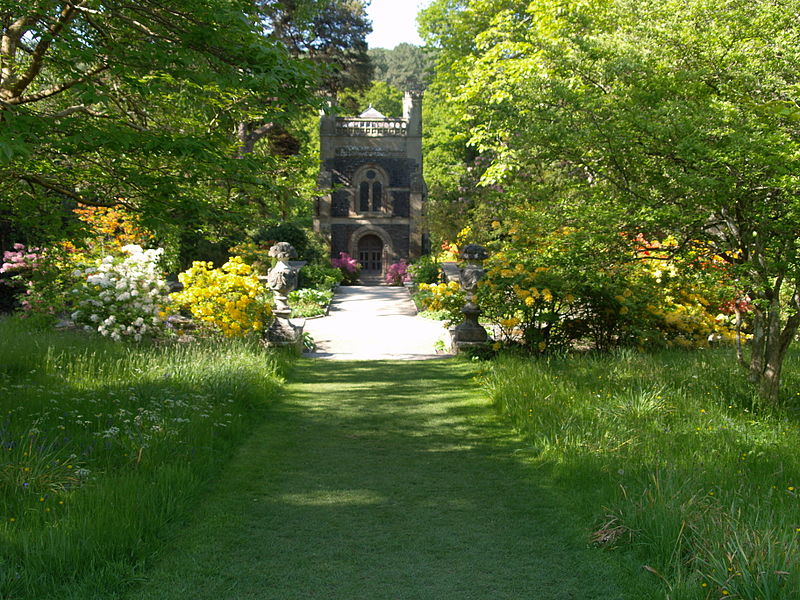Soft landscape
Contents |
[edit] Introduction
The term ‘landscape’ refers to an area whose character is the result of the action and interaction of natural and/or human factors’ (ref European Landscape Convention). For more information see: Landscape.
Softscape or soft landscape includes all types of plant life, from flowers and trees to shrubs and groundcover. All of the living horticultural elements of landscape design are soft landscape components. The term is commonly used by gardeners and other members of the landscaping profession, such as practitioners of landscape design, landscape architecture, and garden design.
Soft landscaping is a term used to describe the process of working with natural materials and other landscape elements that do not involve construction. This can include elements including turf, trees, hedges, shrubs and so on.
Soft landscape contrasts with hard landscape, which is the non-plant material used in landscaping, such as retaining walls, paving material, driveways, walkways, decking, steps and so on. For more information see: Hard landscape.
[edit] Creating a suitable soft landscape
The materials that are used for soft landscape naturally change and evolve over time, driven by growth, the climate and other conditions. Seasonal components can also play a significant factor in soft landscape planning, particularly when there is a desire to create a vibrant environment throughout the course of the year.
Plans for soft landscapes range from natural shapes accented by bright plants and grassy textures to more structured and artificially formal designs.
[edit] Planning for maintenance
Careful consideration should be given to the amount of maintenance that these elements will require to stay in good order. Lower maintenance soft landscape ideas include:
- Selecting plants that are either drought or flood resistant, depending on the average rainfall of the area.
- Planting shrubs, hedges and trees that require minimal care.
- Mulching often but turning the soil infrequently.
- Planting densely to minimise the need to weed.
- Reducing plantings that require high levels of labour.
- Using established beds and borders to structure soft landscape.
Soft landscape materials are frequently supported by hard landscaping elements. Ideally, they should work together to create a cohesive space that is integrated into to the environment around it.
The Landscape Institute (LI) is the Royal Chartered Institute for Landscape professionals and an educational charity. It was founded in 1929 (when it was known as the Institute of Landscape Architects), and the first President, Thomas Mawson, was one of the first professionals to use the title 'landscape architect'. For more information see: Landscape Institute.
[edit] Related articles on Designing Buildings Wiki
Featured articles and news
A change to adoptive architecture
Effects of global weather warming on architectural detailing, material choice and human interaction.
How big is the problem and what can we do to mitigate the effects?
Overheating guidance and tools for building designers
A number of cool guides to help with the heat.
The UK's Modern Industrial Strategy: A 10 year plan
Previous consultation criticism, current key elements and general support with some persisting reservations.
Building Safety Regulator reforms
New roles, new staff and a new fast track service pave the way for a single construction regulator.
Architectural Technologist CPDs and Communications
CIAT CPD… and how you can do it!
Cooling centres and cool spaces
Managing extreme heat in cities by directing the public to places for heat stress relief and water sources.
Winter gardens: A brief history and warm variations
Extending the season with glass in different forms and terms.
Restoring Great Yarmouth's Winter Gardens
Transforming one of the least sustainable constructions imaginable.
Construction Skills Mission Board launch sector drive
Newly formed government and industry collaboration set strategy for recruiting an additional 100,000 construction workers a year.
New Architects Code comes into effect in September 2025
ARB Architects Code of Conduct and Practice available with ongoing consultation regarding guidance.
Welsh Skills Body (Medr) launches ambitious plan
The new skills body brings together funding and regulation of tertiary education and research for the devolved nation.
Paul Gandy FCIOB announced as next CIOB President
Former Tilbury Douglas CEO takes helm.
UK Infrastructure: A 10 Year Strategy. In brief with reactions
With the National Infrastructure and Service Transformation Authority (NISTA).
Ebenezer Howard: inventor of the garden city. Book review.
Airtightness Topic Guide BSRIA TG 27/2025
Explaining the basics of airtightness, what it is, why it's important, when it's required and how it's carried out.






















